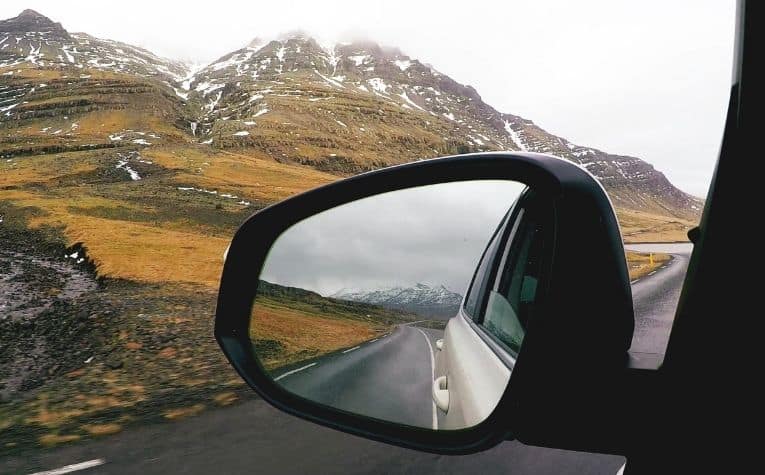Travelers to Iceland not only need to plan for how to get to the island, but how they are going to move around on it once they arrive.
Getting to and from location to location, especially in the capital of Reykjavik is especially important to think about in advance.
The first question many travelers have is does a person need a car in Reykjavik?
Travelers do not need a car in Reykjavik, Iceland in order to explore the city.
While rental cars are available, many people utilize driving services, take public transportation like a bus, and walk around the pedestrian-friendly city to get from location to location.
Certain factors may be important to determine the kind of transportation a visitor needs in Reykjavik, such as the weather as well as road conditions.
A traveler with physical limitations may want to consider a car for the sake of convenience and secure one with a reservation in advance of their arrival.
Yet most visitors to Reykjavik often choose one of the more common ways to get around the city, which can be explored below.
Are there are a lot of Christians in Iceland? See Why Are There So Many Churches in Iceland? to learn more.

The Best Ways to Get Around Reykjavik
The city of Reykjavik is relatively small when compared with many other national capitals in the world, with a population of around 120,000.
The city is 105 square miles or 273 square kilometers. [1]
Though Reykjavik isn’t comparable to major metropolitan areas like New York or London, it’s big enough that travelers will want to plan how they are going to get around in the city.
The three most common ways to get around Reykjavik, in order, are:
- walking
- public transportation
- driving
Driving doesn’t necessarily mean renting a car; utilizing driving services is more common and affordable. “If you’d rather keep your travel expenses low and roam freely without sticking to a set schedule, car hires are likely your best option.” [2]
Which is the best way to see and experience the city of Reykjavik?
Visiting Iceland doesn’t have to be difficult. See Is It Better to Use Cash or Card in Iceland? to learn more.

Walking in Reykjavik
Walking to get from place to place in much of central Reykjavik is easy and smart. The city is friendly to walkers, though sometimes the weather is less than ideal.
Avoids traffic: Walking enables visitors to escape traffic snarls and relieves them of the headache of parking and fuel needs.
Saves money: Walking also saves people money on transportation, which is especially important to visitors who arrive in the city on a budget.
Experience culture: Most people notice that they take the surroundings of a particular pace if they walk around outside, rather than speedily zip through it in a vehicle.
Enables exercise: Some traveling requires a lot of sitting, whether on planes, boats, or in vehicles.
Walking while traveling is a great way to acclimate to the region and keep one’s body healthy, and also contributes to good sleep, while away from home.
Potentially safer: Many people believe that most of Reykjavik is easier to navigate on foot.
For a visitor, learning a new city’s road system can be a challenge, especially if the street signs are in a different language and the traffic laws are unknown.
With regard to safety overall, the city of Reykjavik is very safe.
While visiting walkers should always be aware of their surroundings when in a foreign city, crime is low in Iceland’s capital.
But what if someone wants to go on tours or see certain locations and isn’t sure how to get there or what to do? Wouldn’t they need a car?
Not necessarily. Utilizing buses is a great option for most people.
Planning to visit Iceland? See 5 Things You Didn’t Know You Needed in Iceland to learn more.
Bus Transportation in Reykjavik
The second most popular form of transportation in and around Reykjavik is the public bus system.
Iceland’s capital has a well-reviewed public transportation system, which many visitors use.
At some point in their visit, many travelers utilize buses for transportation from, and back to, the airport, for example.
Taking buses to and from Reykjavik is common, as is taking buses to hotels that aren’t in the capital and outlying areas around the island.
Buses also operate in the city of Reykjavik itself, so a person who prefers to ride or can’t physically walk the required distances from place to place can use public transportation, which is affordable and convenient.
Bus tours in Iceland
Public transportation is one way to utilize buses and private bus tours are another.
Bus tours in Iceland will take visitors to popular Icelandic tourist destinations, including those in Reykjavik.
For some the drawback to bus tours is the cost. Bus tours are more expensive than taking public transportation and maybe a similar cost to renting a car.
Get information from hotels
While planning in advance is wise, such as doing online research or using a travel agency, one of the best places to get transportation information is hotels.
Hotels are experienced in helping travelers navigate Reykjavik and other places in Iceland.
They typically have the latest information on cost, potential weather delays, and other factors related to daily travel in Iceland.
Driving a Car in Reykjavik
Do visitors need a car in Reykjavik? No. But can they use one if they choose? Yes.
Renting a car
Renting a car provides visitors with the freedom to travel according to their own schedule, except for traffic delays, customizing their visit to Iceland with more precision.
Drivers save time because they don’t have to walk or wait for public transportation.
Visitors who rent cars also have an easier time hauling whatever they have with them, like luggage, camera equipment, and outdoor recreational gear.
Considerations
Visitors should consider potential hazards when making their car rental plans:
- rental, fuel, and insurance costs
- reading street and road signs
- driving in bad weather, especially if one lacks experience doing so
- driving on unfamiliar roads and highways in the dark
Car rental services will assist visitors to rent the right vehicle for current weather conditions.
A 4×4, for example, maybe the best option in snow. However, a 4×4 may not help at all on ice, and experience would be a significant factor.
Fuel costs
Fuel in Iceland is relatively expensive. It is not unusual for gas to be $6 or $7 USD per gallon of gas. [4] Depending on the amount that is driven, more than $60 a day could be spent on gas.
A driving service
Another way visitors can get around Reykjavik in a car, but with less of the risks mentioned above, is by hiring a car and driver service.
This is a common way to travel in other countries and drivers are used to helping tourists.
Being driven, as opposed to driving, carries less risk and is a more flexible option than public transportation most of the time.
Hiring a driving service is, however, more expensive than many other options.
If a tourist hires a driver for the duration of their trip, then they will be spending a significant amount of money.
Most budget-conscious travelers will likely select another option.
Speaking English in Iceland
Many visitors to Iceland speak English and don’t speak the native tongue, Icelandic.
English-speaking travelers will likely have little trouble communicating on the island because most Icelanders speak English. [5]
People who work at the airport, employees of hotels, and bus drivers can often communicate with visitors in English, so language is generally not a problem for tourists.
Many smartphones have available applications for helping translate one language into another, which helps visitors communicate when in another country.
This way of communicating may take more patience from the visitor as well as the non-English speaker, but most people will be willing to help.
References:
[1] Source
[2] Source
[3] Source
[4] Source
[5] Source
